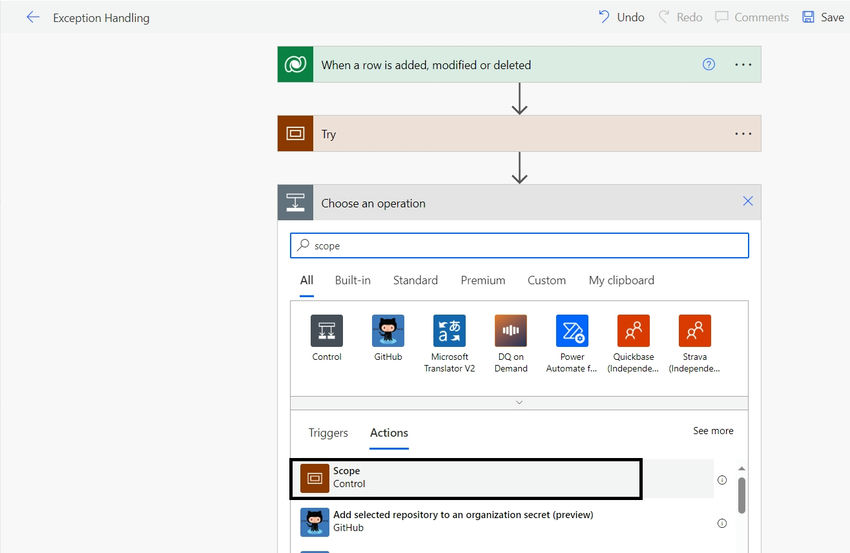Introduction
This article provides an example of how to use Try and Catch Scope Action to handle exceptions effectively in Power Automate.
Creating a Scope "Try" Action
A group of actions are contained within the "Scope Try" action, which serves as a bucket. Its main objective is to carry out these operations as a single process while keeping an eye out for any potential exceptions. It enables the flow to switch gracefully to the " Scope Catch" block if an error occurs within the " Try" scope.
The steps are listed below. Attempt to capture scope action.
Step 1. Utilize Dataverse Action to create a flow.
Step 2. Select a scope action to carry out. Test out Scope Action.
![Test out Scope Action]()
Step 3. Add additional steps as necessary to the Try Scope, as shown below.
![Try Scope]()
Creating a Scope "Catch" Action
When combined with the "Scope Try" action, the "Scope Catch" action functions as an error-handling block. By catching and handling errors that happen within the " Try" scope, it serves as a safety net. The flow automatically switches to the " Scope Catch; action for error handling and recovery when a problem arises.
Step 4. Add the following Scope Action Control.

Step 5. Configure the run after the function to select has failed, has been skipped, or has timed out, as shown below.


Step 6. Add an email action and an expression to catch the details of the exception.
result('Try')
![result try 1]()
![result send an email]()
Final Flow View
![final flow view]()
Advantages of Scope Try
- Enables the grouping of related actions in a tidy and orderly manner.
- Ensures that a "Try" block error won't result in the failure of the entire flow.
- Permits the "Scope Catch" action to be called to handle errors and recover from them.
Advantages of Scope Catch
- Helps to handle structured errors, preventing unanticipated failures.
- It offers the chance to record errors and to act.
- Improves flow reliability by enabling the flow to recover gracefully from exceptions.
Summary
In this article, I covered how to send emails with exceptions by adding the output of the try scope using an expression, as well as how to handle exceptions using the Try and Catch Scope Action.